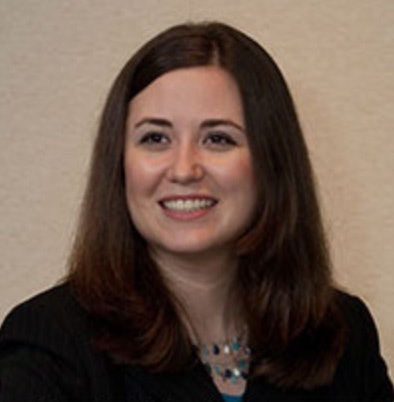The National College Access Network (NCAN) has launched its #FormYourFuture FAFSA Tracker, giving states a week-by-week snapshot of rankings in their progress to achieve a 100-percent benchmark of high school seniors completing the Free Application for Federal Student Aid.
 Carrie Warick
Carrie WarickAs a part of its #FormYourFuture campaign, NCAN officials created the online interactive dashboard to inspire friendly competition among state policy leaders and educators to get students on track to college. FAFSA completion is an indicator of eventual college enrollment, the organization said.
“For some policy makers who may say, ‘The FAFSA only takes 30 minutes on average, it’s not really a problem,’ this is a concrete tool to say, ‘Then why are so few students doing it?’” said Carrie Warick, director of policy and advocacy at NCAN. “[Either] there is a problem with the form or we have some larger contextual problems here around the college-going conversation. Both of those are things that we need to address, but this helps us put some data into that conversation.”
NCAN’s national FAFSA tracker was inspired by FAFSA completion campaigns at the state level such as those created by the Florida College Access Network, Michigan College Access Network and Alabama Possible, some of NCAN’s member institutions. Data calculations on FAFSA completion rates and enrollment headcount of seniors at public and private high schools are provided from Federal Student Aid (FSA) and the Western Interstate Commission for Higher Education (WICHE), respectively.
Tennessee currently ranks number one – at 68.3 percent – for the highest percentage of high school seniors who complete a FAFSA application. And because the tracker also offers comparisons between the 2017-18 and 2018-19 FAFSA cycles, Louisiana ranks number one for the largest percentage change over a year at 32.9 percent.
The tracker “is a very public – but still friendly – place where you can stack yourself up against your peers,” said Bill DeBaun, creator of the FAFSA tracker dashboard and director of data and evaluation at NCAN. “No policy maker or state institution is going to want to see themselves at the bottom of this ranking. Unfortunately, someone does have to be number 51 on our list, but hopefully it spurs some kind of introspection about, ‘Ok, what are we doing differently here?’”
In some cases, DeBaun added, states are “a little bit at the mercy of their state context” or available FSA data in regards to their rankings on student FAFSA completion. In Tennessee, for instance, students are required to complete the FAFSA in order to qualify for the “Tennessee Promise” last-dollar scholarship. This year was the first year Louisiana students were required to complete the FAFSA in order to graduate from high school.
In California, Warick said NCAN will possibly see a spike in FSA data around the state’s financial aid deadline. But in Alaska – listed at 51 on NCAN’s tracker – there are many small high schools and “there are a very high percentage of high schools that still aren’t appearing on the FSA list,” which is a “contributing factor to them being on the bottom,” DeBaun explained.
However, he added, that is not necessarily an excuse for schools that may hold lower rankings.
“If you look at that list and you see where you are and you can explain why that is, that’s great,” he said. “But if it’s not – if you really think that you should be higher or that you could be higher, then maybe this is the push to take a look at some of the resources that are out there from #FormYourFuture or other campaigns and say, ‘We don’t have to be at this rank.’”
A toolkit resource is available on NCAN’s #FormYourFuture website for institutions looking to replicate programs or initiatives leading to higher student FAFSA completion outcomes. NCAN also holds FAFSA and financial aid completion nights, meetings with parents, financial aid advisors and college counselors and other events at the grassroots level to get students and their supporters engaged in the process of total student FAFSA completion.
The organization invests in work around FAFSA completion because each year, findings show that students leave roughly $24 billion in aid money – including $2.7 billion in Pell Grants – unused. Research also shows that students who file the FAFSA are 63 percent more likely to go to college.
“There’s no silver bullet in access and affordability with higher education, but FAFSA completion is the best predictor of eventual enrollment,” Warick said. “We wanted to be very focused there.”
While strides are being made to widen the FAFSA completion window and support students in their FAFSA-completion process, DeBaun said there are still obstacles built into the system that can “trip [students] up,” even if they have done everything right academically.
“For all of the investment that we make in higher education, we need to do better, and we especially need to do better by students who are underrepresented in higher ed.”
Tiffany Pennamon can be reached at [email protected]. You can follow her on Twitter @tiffanypennamon.



















